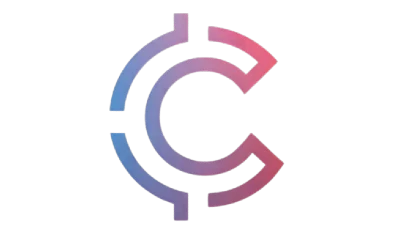Discover how Artificial Intelligence is revolutionizing the crypto world from intelligent trading bots and fraud detection to smart contract auditing and portfolio management. Explore the future of AI in crypto for 2025 and beyond
How AI is Transforming the Crypto Space: From Security to Trading

In this era of digitalization, where blockchain and cryptocurrency have revolutionized the financial space, Artificial Intelligence (AI) has also begun leaving its strong imprint in the crypto space. The interaction between crypto and AI is so strong that it not only facilitates trading to be effective but also transforms the approach of security, risk management, fraud detection, and even the development of the blockchain. The following article will enlighten you on how AI has begun altering the world of crypto starting from trading bots to auditing smart contracts.
1. AI Trading Bots A New Approach to Reading the Market
The first and most evident role that AI is taking on in crypto is that of trading bots. Previous trading systems had previously been human-analysis driven – where emotions, poor judgment, and analysis of limited data were a huge risk. But AI trading bots, particularly those based on Machine Learning and Deep Learning, analyze intricate patterns of the market in real-time and make decisions in real-time as well.
These robots analyze price movements, sentiment (Twitter, Reddit, news, etc.), and even macroeconomic data to decide on trades. AI robots operate 24/7, no question of human fatigue. With algorithms such as Reinforcement Learning and Natural Language Processing (NLP), these robots can forecast the market even by reading the news for instance, if a coin gets hacked or Elon Musk posts something on Twitter, the AI system knows its implication and immediately places the trade.
2. Sentiment Analysis Crowd Thoughts Analysis
The crypto market is very volatile compared to regular stocks, and in this scenario, the sentiments of people are a significant factor. Because of it, sentiment analysis is a strong AI tool that is now being used by investors as well as traders. NLP is utilized by AI algorithms to try to analyze natural language and then go ahead and make a smart guess as to what humans are considering with regards to a coin by web-scraping Twitter tweets, Reddit discussions, Telegram groups, and cryptocurrency news sites.
If a coin is described as bullish by individuals, an AI platform can forecast a short-term dump or spike on the basis of observing that data. That is referred to as “social listening” and is currently being employed not just for brand-building but even for stock forecasting.
3. Fraud Detection and Anti-Money Laundering (AML) Tools
But yet another useful contribution of AI in the crypto space is in AML and fraud prevention. Because of the anonymity in the crypto space, scams, rug pulls and illicit transactions are extremely frequent. But AI powered systems can flag suspicious patterns like if a wallet address is sending/receiving an abnormal amount consistently, or there is suspicious volume on a particular exchange, then the AI system sends an alert.
Machine learning algorithms provide ongoing monitoring and identify illicit behavior by identifying patterns. This is why exchanges like Binance and Coinbase are applying AI-driven compliance platforms to satisfy regulations and safeguard their customers.
4. Blockchain Security Smart Contracts Auditing with AI
Smart contracts are a part of the blockchain, but bugs and vulnerabilities are extremely common. Manually auditing smart contracts is time-consuming and expensive. AI also plays a role here namely static analysis tools that review the smart contract code for logic bugs, reentrancy attacks, gas optimization problems, and countless others bugs.
With the help of natural language processing, some AI tools are now generating Solidity code from the natural language description of the smart contract. This implies that one day even non-tech individuals will deploy secure smart contracts with the assistance of AI.
5. AI in Crypto Portfolio Management
Crypto investors never get to see their portfolios in real time. AI-powered portfolio managers guard your money, examine market information and prompt you to rebalance what investment. These products know your risk tolerance level and recommend accordingly, just like robo-advisors in the traditional financial sector.
These app-based systems such as Shrimpy, 3Commas, and Cryptohopper give you automated management of portfolios. These apps will trade for you according to the strategies you have defined and notify you in order to avoid a market crash.
6. Predictive Analytics For Looking into the Future
Above all, the work of AI is to forecast based on interpreting data. Predictive analytics is where the AI system utilizes past data to forecast price movement or trend. These models utilize time-series forecasting and regression techniques, whereby investors make well-informed decisions.
Several platforms also utilize AI to forecast which coin will do better next week or month based on on-chain data, sentiment and trading volume.
7. AI-Powered Decentralized Finance (DeFi) Tools
AI has brought a new degree to the world of DeFi. AI is being implemented in order to improve lending protocols, staking utilities and yield farming strategies. AI models study the user’s past transactions and risk tolerance and advise where the yield will be maximum and what protocol involves higher risk.
AI-driven aggregators compute data from different DeFi protocols and suggest the best rate or platform – e.g., best liquidity pool or safest staking platform.
8. AI and NFT Valuation Models
The NFT market also is fluctuating, but AI is assisting here as well. Certain startups are creating AI models that forecast the fair value of an NFT based on historical NFT prices, artist popularity index, artwork characteristics, and social activity.
This assists traders and collectors in determining overpriced or underpriced NFTs.
9. Challenges and Concerns Not all is rosy
Even though AI is highly powerful, there are a few problems. AI models can become biased if they are trained with biased data. Overfitting, wrong predictions, and black-box decision-making are also problems. The decentralized nature of crypto sometimes clashes with the centralized nature of AI systems.
Other than this, AI technologies are costly and are out of reach for small traders. Data privacy is a significant concern as well that must be remembered while training AI models.
10. Future Outlook Is AI the future of crypto?
In the next 5-10 years, we are going to witness crypto and AI integration becoming even more intense. We will witness more application of AI in Decentralized Autonomous Organizations (DAOs). AI agents will need to decide when they should trade, stake, or invest through their own DeFi protocols they won’t have anything to do with humans at all. Humans will just be onlookers.
AI will be at the forefront of smart contract development, security, legality, and community governance. We will have AI-powered decentralized networks in the future where the involvement of humans is reduced.
The marriage of AI and crypto has been a game-changer. From security to fraud prevention, trading and portfolio management in each sector, AI is bringing new tools and methods that are making the world of crypto smarter, quicker, and safer. But alongside these come ethics and regulatory challenges that must be tackled with similar gravity. The future certainly belongs to AI and crypto but responsibly adopted.








